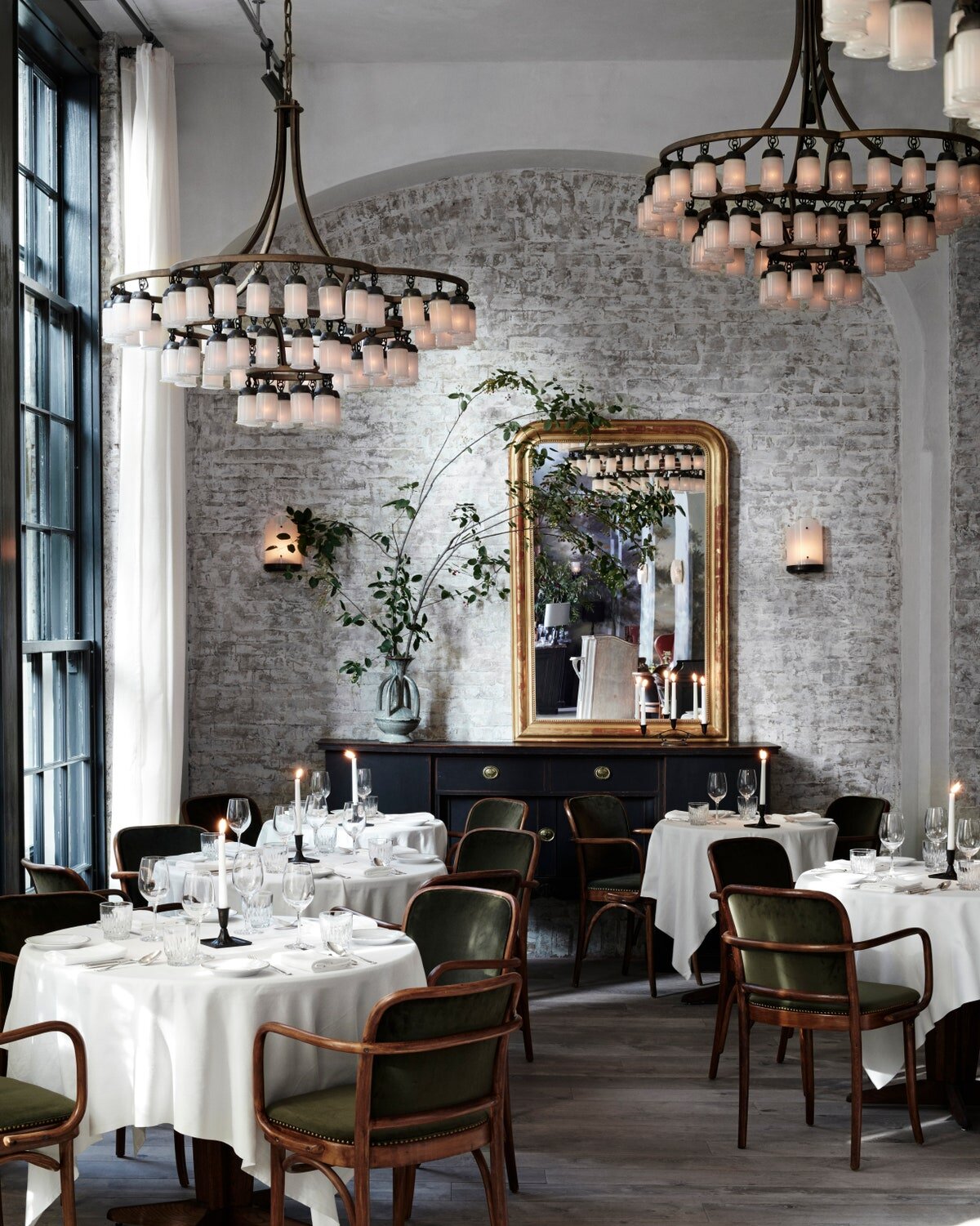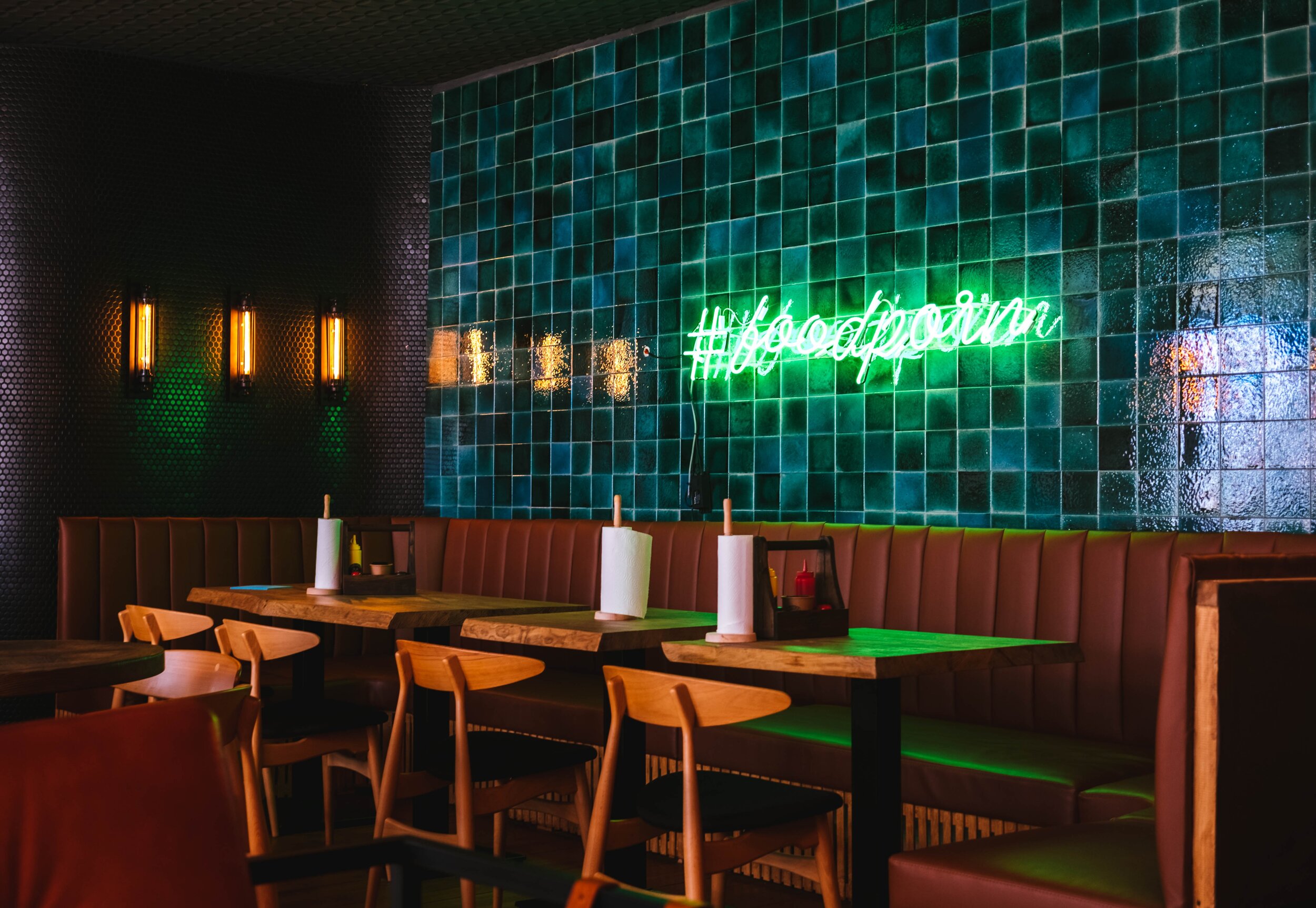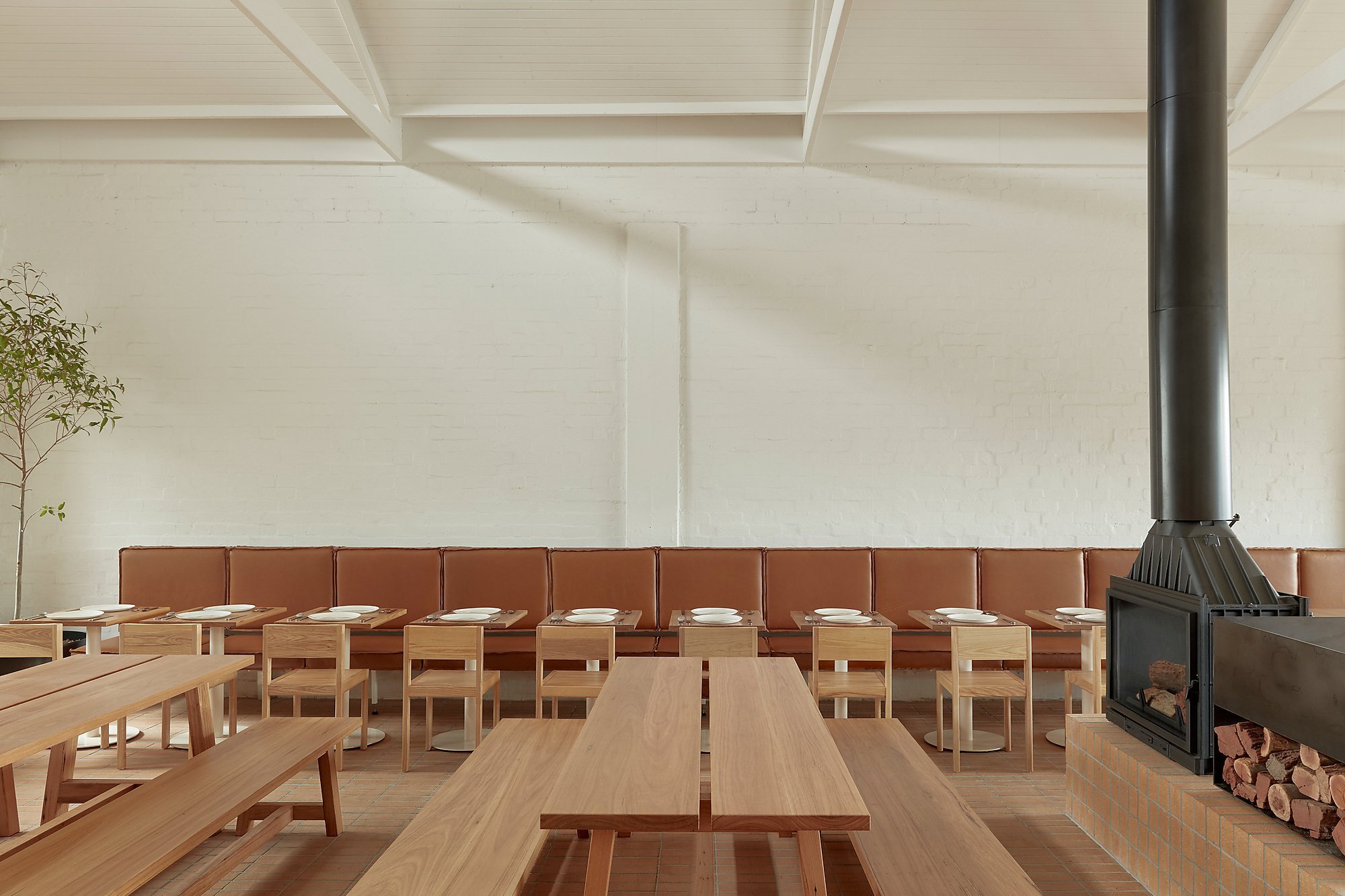The Psychology of Restaurant Interior Design
Restaurant interior design is more than just creating a beautiful space. There is a psychology behind choosing design elements to ensure diners enjoy a restaurant.
Article by Jude Kamal, Founder & Registered Interior Designer of Sansa Interiors
There are many things to consider when designing a restaurant. The psychology behind restaurant design ensures that a restaurant is designed in a way that engages guests both aesthetically and physically. Eating at a restaurant is a holistic experience that involves more than just the food. The dining experience of your customers starts when they walk into the restaurant (and sometimes before they walk in). Things like the ambiance, lighting, furniture, acoustics, and other sensory elements in the space all work together to create an enjoyable experience for every guest.
Do you ever walk into a restaurant and instantly feel relaxed, comfortable, and ready to have a pleasant time? Well, there is a science behind why you feel that way. Great restaurant settings don’t just happen randomly. There is a reason restaurants are designed the way they are.
The Psychology of Restaurant Interior Design explores the different ways restaurants can and should be designed to give guests the best and proper dining experience. This article will educate you on how restaurants use psychology for their interior design.
Image source: Architectural Digest
What is Restaurant Interior Design Psychology?
Restaurant interior design goes beyond buying beautiful furniture and having a cool theme. Interior designers go to great lengths to create the right interior for a restaurant using restaurant psychology as a guide.
Restaurant interior design psychology is the process of arranging the environmental conditions to create a controlled and desired environment in a restaurant. It is providing the right balance of different elements in a restaurant design to give guests the best dining experience. Restaurant interior design psychology requires a delicate and informed balance of several factors which we will discuss below.
The Most Important Elements of Restaurant Interior Design Psychology
There are 5 key elements that are crucial to the psychology of restaurant interior design. We are going to discuss these elements and explain how restaurants use interior design psychology to their advantage.
Colour
In restaurant interior design, colour psychology plays an important role. There are three colours that are regarded as the best colours for restaurants because of how they help in stimulating appetite. They are red, orange, and yellow. These colours are a common pick for restaurants and with good reason. Red is one of the most effective colours for stimulating appetites. Bright red produces a strong signal for an appetite in the human brain. This is why most food packaging and fast-food restaurants use bright red as their signature colour. Think Coca-cola, McDonald, KFC, Kelloggs, Kit kat, etc. Orange and Yellow are also appetite stimulants and the brain associates these colours with happiness and warmth. This doesn’t mean you should paint your entire restaurant yellow or go buy all red furniture. There is a science to it and a method that allows you to blend all the different elements to create the restaurant design that matches your restaurant theme and business goals. So keep reading.
Grey, black, brown, purple, and blue are colours considered to be appetite suppressants. They are usually associated with bad food or poison so our brain subconsciously shies away or is repulsed by these colours. Blue is also a calming colour that induces sleep so it’s not advisable to use it heavily in a restaurant’s design. You want your guests to be wide awake and stimulated when dining.
When talking about colour in the psychology of restaurant interior design, Green is a colour that is very important to discuss. Opinions vary on whether it is a good colour for restaurant interior design or not. Green is generally considered a mild appetite stimulant. However, some argue that it is a strong appetite stimulant because green, being the colour of nature, and leafy vegetables, signifies health. Today people are more conscious of eating healthier, going organic, and wanting vegetarian and vegan options. Given this massive shift in eating habits, it is safe to say that green is a strong appetite stimulant and should not be ignored when thinking about colour for restaurant interior design.
2. Lighting
The lighting of a restaurant sets the general mood and is a very crucial aspect of restaurant psychology. There are three main types of restaurant lighting. These three lighting types should work seamlessly together to create your desired mood.
Ambient Lighting
Ambient lighting is the main lighting of a place. Your ambient lighting dictates how your restaurant is lit and therefore the general mood of the place. The type of ambient lighting depends on what type of restaurant but these main rules apply. Bright lighting creates a lively mood and is more suitable for casual and fast-paced restaurants where guests come and go quickly. Think fast-food restaurants and more casual dining places like cafes. Low lighting is appropriate for upscale and fine dining restaurants. It creates an intimate and relaxing environment that encourages guests to be leisurely, confident, and to lean in to talk. If you’re a restaurant that caters to many guests on dinner dates for example, then low ambient lighting is the most appropriate.
Task Lighting
Have you ever been to a restaurant that was so dark you had to turn on your phone light to be able to read the menu? Such a restaurant has bad task lighting. Task lighting helps guests and staff to do basic tasks like read the menu, find their table, walk to the bathroom, etc.
Accent lighting
Accent lights are an interior design feature that can transform a place and create a wow factor. Accent lighting is used to draw attention to specific areas of the restaurant such as paintings on the wall, unique sculptures, etc.
3. Scent
What scent do you want to greet visitors when they walk into your restaurant? The smell of the food cooking in the restaurant kitchen, a curated perfume smell, something seasonal like autumn spices or mint, or nothing at all? Research has shown that a pleasant and memorable scent in a restaurant is likely to make guests revisit. Scent is one of the five scenes that is closely linked to memory so it determines how guests remember their dining experience at a restaurant. It can also change the entire perspective of a place. Scent is one major way restaurants can use psychology to their advantage. Take Bakeries for example. They are heavily reliant on the psychology of smell and use it to their advantage. The smell of freshly baked bread or pastries can lure almost anyone and create an instant craving.
The scent of a restaurant should be pleasant but not distracting. It should stay in the background and complement the dining experience. Chicago-based Michelin star restaurant Alinea takes the role scent plays in the dining experience very seriously. They are known for serving dishes accompanied by a pillowcase of spice-scented vapor which is then punctured when a dish is served.
4. Acoustics and Music
Acoustics is a very important factor in the psychology of dining out. The type of restaurant will determine what type of sound it should have. However, you don’t want to design a restaurant that is too loud or too quiet. When a restaurant is too loud it can distract guests from the food and disrupt their conversation. For example, if you play music too loudly, it would cause guests to raise their voices thus increasing the noise. Remember, people dine out to socialize so they should be able to hear each other. In contrast, when a restaurant is too quiet, it can make the place seem unpopular or cause guests to feel self-conscious and isolated. It can also make guests feel like they don’t have privacy because guests at other tables can hear them when they speak.
The interior design of a restaurant can help control the acoustics. For example, high ceilings or padded booths can help control noise. When deciding to have an open kitchen or not, keep in mind the effect it will have on the acoustics of the restaurant as noise from the kitchen can flow into the dining hall and distract guests. There are instances where designing a place to be loud is the desired effect. Places like bars or restaurants like Hard Rock cafe or Barcade like to have the place loud and noisy as it causes guests to eat and drink faster and order more.
Another important aspect of ambiance is the type of music playing. Some restaurants choose to play piano music (or even have a live piano performer). This is common because music with lyrics can be distracting to guests. If you choose to play music with lyrics, make sure you choose songs that don’t have vulgar or suggestive lyrics or overly depressing songs that could dampen the mood of the space.
5. Furniture and Layout
In designing the layout and choosing furniture for a restaurant the cardinal rule is: every table should be a good table. Regardless of where a guest is seated in a restaurant, they should feel like they have an excellent seat and thus an excellent dining experience. Some guests usually like to pick their table or prefer to be seated in certain areas of the restaurant especially when those guests are regulars. However, proper furniture and layout design in restaurant interior design ensure that every table is a good table. And by a good table, we mean the furniture and location are comfortable and well thought out so that the guest does not feel shortchanged. The general psychology of dining out is that guests want to have a good time and feel taken care of.
The Pillars of Restaurant Interior Design
At Sansa Interiors, there are two important factors we consider when designing a restaurant.
The design narrative
Operations
If we were to simplify things we would say that the psychology of restaurant interior design rests on these two pillars. They go hand in hand.
The Design Narrative and Story
The story, concept, and idea of your restaurant dictate how your customers will feel when they visit. It is the overarching theme that will pull different facets of your restaurant design together from the colour of the walls to the type of cutlery you choose. Keep in mind that your story or design narrative is not a theme. It is more delicate than that. A design narrative is carried on through different details of the restaurant design from the colour decor to the cutlery to the type of furniture. It ensures that each design element plays a unique part that fits cohesively into the entire design scheme. It creates a cohesiveness that is subtle yet powerful. Having a story makes sure your design does not fall into the trap of being gimmicky, overly trendy, or mismatched.
To create the perfect story, the restaurant must have the ideal customer in mind. A restaurant cannot cater to everyone so there must be a clear picture of the target customers when designing and deciding what the story of the restaurant will be. When you know who your customer is, then you can start to design and set up your restaurant to attract this type of dinner and give them the best experience when they visit.
Operations
Even if you have a beautifully designed restaurant with all the right elements and the perfect vibe, it won’t work if you don’t have the right operations set up. Can your waiters walk back and forth from the kitchen with ease? Can the guests find the bathroom easily? The interior design of a restaurant ensures that the operational layout flows seamlessly and works in alignment with the activity of the staff and guests. This will contribute significantly to creating a positive dining experience for guests. This applies to all types of restaurants be it fine dining, casual, or even takeout-only restaurants.
Looking for a Restaurant Interior Designer in Toronto?
We can help! We specialize in Restaurant Interior Design. Our team serves downtown Toronto, Etobicoke, Mississauga, and the rest of the Greater Toronto Area.
Sansa Interiors is here to support your killer restaurant biz.







